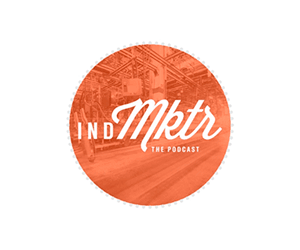Google Ads has grown to become the most widely used form of online advertising today, which is what makes Google Ads performance such an important topic for all marketers, including industrial marketers. From dish soap to the oil and gas industry, Google Ads is used in nearly every industry around the world. With this influx of ads being thrown into our faces every day, it’s important to know how to stand out from the crowd and create invigorating advertisements that people want to engage with.
Unfortunately, many advertisers are stuck in the mentality that the “average performance” is good enough. What we should be doing is striving for more results, constantly finding new ways to improve our Google Ads performance and get searchers to click on our ads.
In this article, we will go over five actionable tips to improve your Google Ads performance. From knowing how the Google auction works to vigorously testing your ads, we are sure that you will find a way to help you get the most out of Google Ads.
1. Target Long-tail Keywords with Buyer Intent
One of the biggest mistakes advertisers make with Google Ads is targeting the wrong keywords. Millions of dollars get wasted every year on targeting low intent keywords. Below are the three types of keywords you can target with online ads:
Informational Keywords
These keywords target pages with informational intent. Basically, they give the searcher information on a certain topic but they don’t target users with the intent of actually buying anything. Unless you deem this absolutely crucial to your strategy, it’s best to stay away from these types of keywords. An example would be “online marketing strategies.”
Navigational Keywords
These keywords are typically used to find a specific page within a website, or the website in general, using a search engine. These queries hold more commercial intent than informational keywords. An example would be “Industrial Marketer.”
Transactional Keywords
These are the keywords with the most buyer intent . These queries are used by someone searching for something to buy. An example of these types of keywords would be “best dishwasher brand” or “online clothing sales.”
Obviously, the best keywords to target are transactional because of the high commercial intent they possess. But it isn’t always that simple. Some navigational keywords can hold a decent amount of value, so it may be best to put those at the bottom of your sales funnel.
However, the best keywords to target at the top of your funnel will always be long-tail keywords with a high commercial (or buyer’s) intent. Examples of these keywords can be “where to buy XYZ computer mouse” or “best computer mouse comparisons.”
Your sales funnel should have these types of keywords near the top, and put a majority of your advertising budget toward them as well.
2. Understand How Quality Score Affects Google Ads Auctions
The Google Ads auction works by taking a bid from an advertiser and comparing their bid to their Quality Score, a Google metric. Your Quality Score will determine where you land in the rankings for that specific keyword based on your competitors’ bids and their equivalent Quality Scores.
How Is Quality Score Determined?
Quality Score is determined by the quality of your previous ads based on click-through rate, relevancy, ad quality, and landing page experience. So by being a better advertiser in Google Ads, you will have a greater chance of getting higher rankings for cheaper costs. This, in turn, will improve your Google Ads performance even more due to the high rankings of your ads.
Quality Score is essentially an aggregated estimate of the overall quality of your ads across your account. So by focusing on creating more relevant ads that properly fit your searcher’s intent, you can raise your Quality Score by quite a bit. You can see what your score is by adding the Quality Score column to your reports.
3. Create Emotionally Charged Ads That Resonate with the Searcher
When you are brainstorming what type of ad copy you are going to create, you should be thinking about how you can emotionally connect with your audience. By creating an emotional impact, you form a relationship that starts before a prospect has even clicked on your ad.
By focusing on what your potential customer is feeling, you can dramatically increase your Google Ads performance because they don’t need to think about which ad is the right choice for them. They know right away that this is where they need to go because they feel like they are understood.
When someone is looking for gaming equipment such as a mouse or keyboards, they want the best equipment that will give them an edge over their competition. Logitech has targeted gamers that want the best gaming gear, and their ads are deployed in a way that reflects this.
So the next time you are thinking about creating a basic ad, try to take it to the next level by creating emotionally charged ads that will resonate with the user’s feelings about the end-goal of the product.
4. Use Smart Bidding Strategies
Smart bidding utilizes machine learning to show your ads at times when they are most likely to achieve a click in every auction. It also saves you a ton of time going through all of your keywords manually to adjust bids.
According to Google, smart bidding is a subset of automated bid strategies that optimize for conversions or conversion value in every single auction. While it may not be perfect, it will help you improve your Google Ads performance more efficiently and give you more time to come up with compelling ad strategies to test out.
Smart bidding strategies are extremely useful for optimizing your workflow and allowing Google to do some of the hard work for you. You can simply set up your account to maximize clicks, conversions, conversion value, or impression share at the click of a button. These tools can be incredibly powerful. But they still require some monitoring to make sure they are performing as intended. Don’t let automation take away your motivation and prevent you from being at the top of your game!
5. Test Your Top-performing Ads Over and Over Again
You can always get better results from a campaign no matter how well you’ve done in the past. By testing your best performing ads with new ideas, you can create even better-performing ads than the last time.
Most marketers seem to put A/B testing far down on their priority list but put simply, it’s one of the most important things you can do to increase your Google Ads performance.
The biggest problem with A/B testing lots of ads is coming up with new copy. This is because negative keywords and bid adjustments are much easier to implement than testing. But it’s so crucial to optimizing your campaigns that it cannot fall to the bottom of your to-do list.
Advertisers can use Google ad variations to help out with this. If you are offering a free trial of your software, you can start delegating Google to send out ads using different copy, such as “free trial software” or “try out our new software for FREE,” or using literally any other ad copy that you deem viable.
You can then compare all of your findings effectively and determine how to get the best click-through rate and conversions from your ads.
John McColman from InFront Marketing has this to say about conversion tracking: “It’s extremely important to separate your ad groups and study them vigorously to find flaws and strengths within your campaigns. This can help you find what drives conversions and ways to improve performance.”
McColman recommends doing this with only your top-performing ads because if you do this with your entire account, it may take up more time and money than it’s worth. But if you break down your best-performing ads and begin A/B testing, you can optimize your campaigns to squeeze every little drop of marketing juice out of them.
Additionally, the more you A/B test, the better you understand the customer. Think of it as not just training your advertisements to do better, but your mind as well. You will subliminally get a better handle on your customer and the way they are thinking. Testing out your campaigns is something you should always have at the top of your to-do list after you have created a semi-successful campaign.
Don’t Settle for Average Google Ads Performance
By utilizing the above tips and tricks, you can increase your Google Ads performance exponentially. Reaching unicorn status (the top 1% of ads) with your ads is no easy feat. It requires an extensive amount of testing and formulating new and innovative techniques to drive qualified traffic through your Google Ads.
By creating emotionally charged advertisements, that are relevant and high quality, you can then test those ads with different variations. From those variations, you can see what works and what doesn’t, formulate a new strategy, and keep refining your prowess as an advertiser. If you do this, your ads will never stop getting better.




